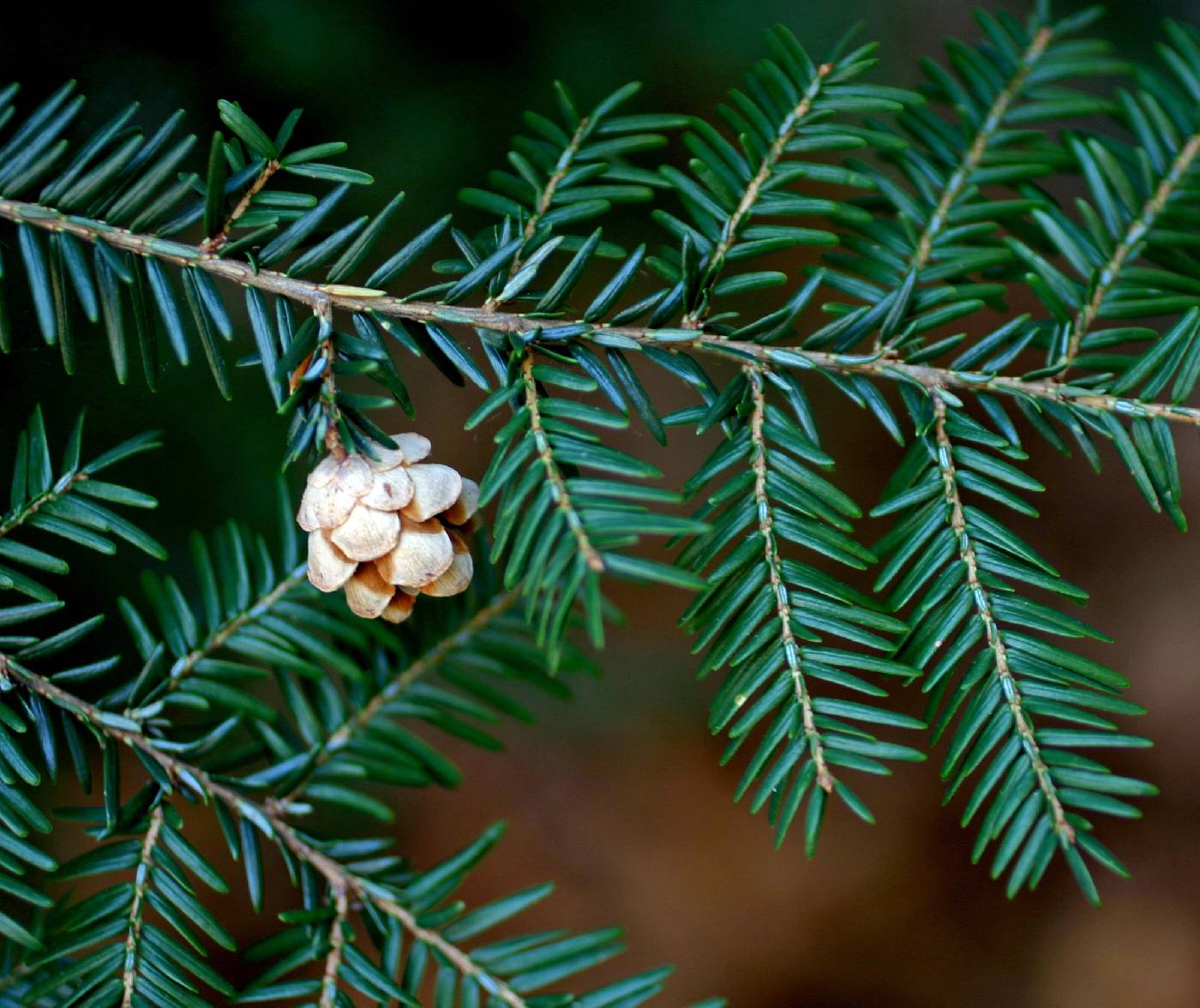|
Family: Pinaceae |
Trees evergreen; crown conic; leading shoot usually drooping. Bark gray to brown, scaly, often deeply furrowed. Branches horizontal, often tending to be arranged in flattened 'sprays' and arched downward; short (spur) shoots absent; young twigs and distal portions of stem flexuous and pendent, roughened by peglike projections persisting after leaves fall. Buds mostly rounded at apex, not resinous. Leaves borne singly, persisting several years, ± 2-ranked or radiating in all directions, flattened to somewhat angular; abruptly narrowed to a petiolelike base, set on peglike projections, these angled, projected forward, sheath absent; apex rounded or notched; resin canals 1. Cones borne on year-old twigs. Pollen cones solitary, globose, brown. Seed cones maturing in 1 year, shedding seeds and falling soon thereafter or persisting for several years, pendent, ovoid, oblong, or oblong-cylindric, sessile or nearly so; scales persistent, shape various, thin, leathery, lacking apophysis and umbo; bracts small, included. Seeds winged; cotyledons 4--6. x =12. Species of Tsuga are found naturally in areas of relatively moist climates where water stresses are minimal. Most are conspicuous, if not dominant, members of the communities in which they occur. Hemlock wood is moderately strong and pliable and lacks resin ducts. With the decline of associated species considered superior in commercial value, hemlocks have become important in the timber industry, especially for pulp. Hemlocks are also widely used for horticultural purposes; numerous cultivars have been developed.
Male cones axillary near the tip of the twigs of the previous season, peduncled, globose; female cones terminal on lateral branches of the previous season, pendulous on a short peduncle, the persistent scales much larger than the minute bracts; evergreen trees, the flat lvs jointed at the base to minute, persistent sterigmata; resin-duct 1 in each lf; 2n=24. 14, temp. Asia and N. Amer. Gleason, Henry A. & Cronquist, Arthur J. 1991. Manual of vascular plants of northeastern United States and adjacent Canada. lxxv + 910 pp. ©The New York Botanical Garden. All rights reserved. Used by permission. |


